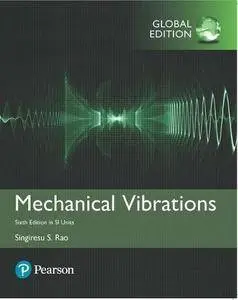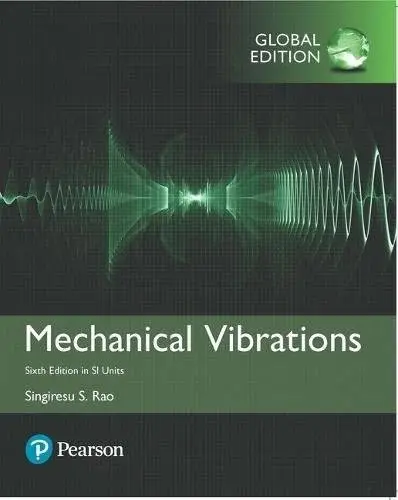Mechanical Vibrations: Sixth Edition in SI Units
Pearson | English | 2018 | ISBN-10: 1292178604 | 1152 pages | PDF | 18.80 mb
Pearson | English | 2018 | ISBN-10: 1292178604 | 1152 pages | PDF | 18.80 mb
by Singiresu S. Rao (Author)
For courses in vibration engineering. Building Knowledge: Concepts of Vibration in EngineeringRetaining the style of previous editions, this Sixth SI Edition of Mechanical Vibrations effectively presents theory, computational aspects, and applications of vibration, introducing undergraduate engineering students to the subject of vibration engineering in as simple a manner as possible. Emphasizing computer techniques of analysis, Mechanical Vibrations thoroughly explains the fundamentals of vibration analysis, building on the understanding achieved by students in previous undergraduate mechanics courses. Related concepts are discussed, and real-life applications, examples, problems, and illustrations related to vibration analysis enhance comprehension of all concepts and material. In the Sixth SI Edition, several additions and revisions have been made-including new examples, problems, and illustrations-with the goal of making coverage of concepts both more comprehensive and easier to follow.
UPDATED! Several additions and modifications to make the coverage of vibration more comprehensive and presentation easier to follow in the Sixth Edition, including suggestions by text users and reviewers:
NEW! A brief discussion of the anatomy of the human ear is presented with an explanation of how vibrations are converted into sound. Experienced engineers can predict the specific cause of malfunction of a machine or engine just by hearing the sound generated by the malfunction.
NEW! Several new applications of vibration are introduced. Problems are related to the vibration of a child restraint in an automobile child-seat, the prediction of a head injury in an automobile accident, the vibratory response of a diver on a high board, the transportation of a precision instrument, and new problems on vibration control.
UPDATED! The solutions of five examples and eight illustrations are revised for improved presentation so that the reader understands the concept/solution process more easily.
UPDATED! Additional details related to the response of an undamped system under initial conditions improves the text’s presentation.
NEW! The description and formulation of vibration problems in several different unit systems is considered to obtain the same response of the physical system.
NEW! A new section titled Beams on Elastic Foundation features illustrative examples and problems, applicable to practical situations such as a railway track.
NEW! The stability and vibration of branches of trees with birds sitting on them is considered using the basic principles of mechanics and vibration.
NEW! Nine new examples, 54 new problems (including three new design projects) and 14 new illustrations are added in this edition.
Clear, detailed presentation. Each topic in Mechanical Vibrations is self-contained, with all concepts explained fully and the derivations presented with complete details.
MATLAB-based problems and programs emphasise computational aspects of vibration engineering.
MATLAB-based examples as well as several general purpose MATLAB programs with illustrative examples are provided in the last section of every chapter to aid students in the numerical implementation of the methods discussed in the text.
Unique presentation of topics with each topic presented with complete details.
All topics related to vibration control are discussed in Chapter 9, while vibration measuring instruments, along with vibration exciters, experimental modal analysis procedure, and machine condition monitoring are presented in Chapter 10. All numerical integration methods applicable to single- and multi-degree-of-freedom systems, as well as continuous systems, are unified in Chapter 11.
252 illustrative examples accompany most topics.
988 review questions are included to help students in reviewing and testing their understanding of the text material. The review questions are in the form of multiple choice questions, questions with brief answers, true-false questions, questions involving matching of related descriptions, and fill-in-the-blank type questions.
An extensive set of problems in each chapter emphasises a variety of applications of the material covered in that chapter. In total, there are 1214 problems, with solutions in the instructor’s manual.
34 design-project-type problems, many with no unique solution, are provided at the conclusion of various chapters.
Computational aspects are emphasised throughout the book. MATLAB-based examples as well as several general purpose Matlab programs with illustrative examples are given in the last section of every chapter. Numerous problems requiring the use of MATLAB or Matlab programs (given in the text) are included at the end of every chapter.
55 MATLAB programs are included to aid students in the numerical implementation of the methods discussed in the text.
Biographical information about 22 scientists and engineers who contributed to the development of the theory of vibrations appears in the opening pages of all chapters and appendices.
Feel Free to contact me for book requests, informations or feedbacks.



